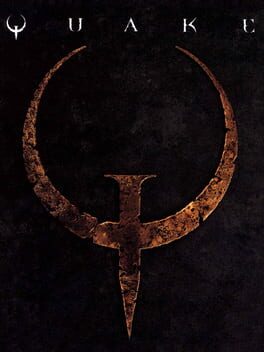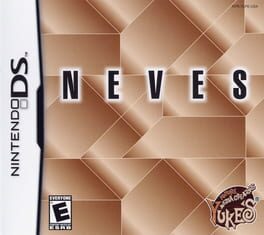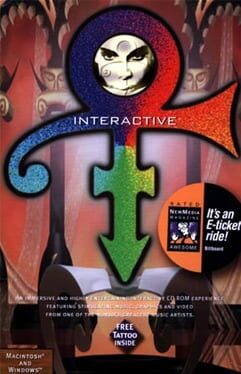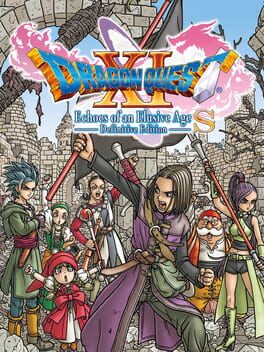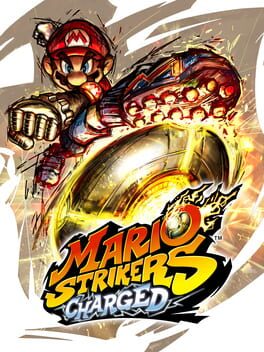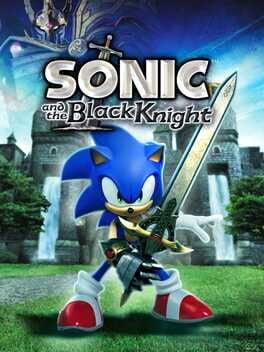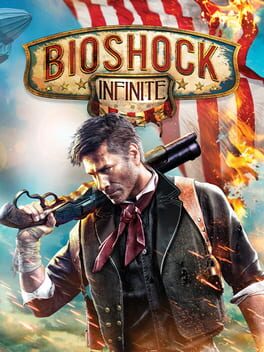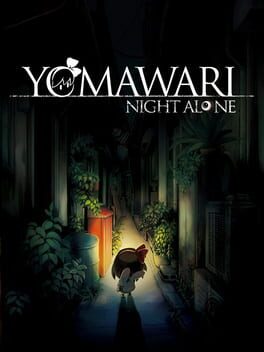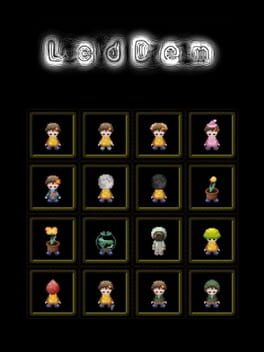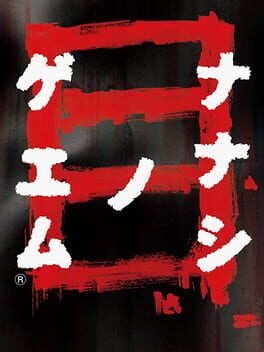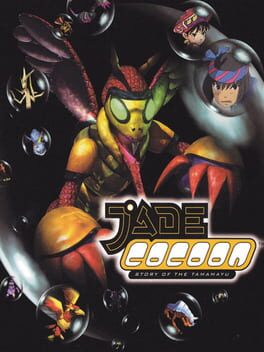dicegame
16 reviews liked by dicegame
Quake
1996
Neves
2007
Dissection puzzles have existed at least as long as recorded history, probably. In brief: a dissection puzzle is a set of tiles that can be assembled to create at least two (but usually more) different configurations of geometric shapes. It’s an idea so simple that variations of it appeared in at least two different parts of the world completely independent of one another. In Ancient Greece, dissection puzzles that visually illustrate the Pythagorean theorem were developed, and are believed to be instrumental to its proof as a fundamental relation of geometry. In China, a type of dissection puzzle known as the tangram has origins in oddly shaped modular banquet tables of the Song dynasty, meant to be moved around and arranged into fun shapes to entertain guests.
How exactly dissection puzzles made their way to Japan is unclear. In 1935, Hanayama Toys manufactured a dissection puzzle made of wooden blocks called the Lucky Puzzle and codified the version of the game that would remain popular in the Land of the Rising Sun to this day. Likely based on the tangram, it bears a remarkable similarity to its Chinese cousin. It’s composed of seven pieces, just like a tangram, but has an elegant self-symmetry that makes it unique from almost all other dissection puzzles.
In Japan, the Lucky Puzzle is recognizable enough that no explanation is needed. So in November of 2007, when a Nintendo DS game based on the classic brain teaser was released, they simply only needed to call it Lucky Puzzle DS. However, North America required a different strategy. Dissection puzzles reached western shores at various points in history, but failed to establish themselves as popular choices for would-be brainiacs. Rather than call it what it is, Osaka-based publisher and developer Yuke's invented the nonsense word Neves to adorn the front cover, similar to other puzzle games on the system. (Polarium, Zenses, and Magnetica, to name just a few of many examples.)
Even without the strong cultural recognition, Neves is intuitively easy to pick up and play. Following a brief tutorial, you’re ready to get right into snapping together shapes. The main attraction is the “Silhouettes?” mode, which is a digital refresh of a Lucky Puzzle picture book. You’re provided with outlines of the solution you’re tasked to replicate, and you have an unlimited amount of time to flip and rotate blocks until you figure it out. The puzzles themselves run a good gamut of difficulty, from ones you can solve at a glance to others that will have you fitting shapes together in every possible configuration and still scratching your head. On a few occasions, I even encountered a version of the famous tangram paradox, in which a construction of pieces seems to be an impossible subset of another. Very cool!
Neves does, however, ignore an important element of dissection puzzles: the ability to create your own silhouettes and challenge other players to mirror them. Perhaps this wasn’t possible due to the medium or too complicated for the type of budget the developers were working with, but Neves does attempt to offset this shortcoming with a couple of additional game modes. There are timed versions of each puzzle, as well as a “7 Steps” mode in which each block you place can’t be moved once it’s glued down.
Due to its novel form factor and tactile controls, the Nintendo DS would end up being an incredible platform for puzzle games. Untethered from the need to interface with games through the mechanical presses of buttons alone, it became possible for your hands to interact with puzzles almost as quickly as your brain could parse through them. Neves doesn’t make the experience perfectly seamless (the flipping and rotating can be a little clunky), but one need only compare to games like Tangram for the Amiga or Daedalian Opus to see how quickly things speed up. It’s a surprisingly solid offering, but then again, it does have the advantage of a few millennia of game design.
How exactly dissection puzzles made their way to Japan is unclear. In 1935, Hanayama Toys manufactured a dissection puzzle made of wooden blocks called the Lucky Puzzle and codified the version of the game that would remain popular in the Land of the Rising Sun to this day. Likely based on the tangram, it bears a remarkable similarity to its Chinese cousin. It’s composed of seven pieces, just like a tangram, but has an elegant self-symmetry that makes it unique from almost all other dissection puzzles.
In Japan, the Lucky Puzzle is recognizable enough that no explanation is needed. So in November of 2007, when a Nintendo DS game based on the classic brain teaser was released, they simply only needed to call it Lucky Puzzle DS. However, North America required a different strategy. Dissection puzzles reached western shores at various points in history, but failed to establish themselves as popular choices for would-be brainiacs. Rather than call it what it is, Osaka-based publisher and developer Yuke's invented the nonsense word Neves to adorn the front cover, similar to other puzzle games on the system. (Polarium, Zenses, and Magnetica, to name just a few of many examples.)
Even without the strong cultural recognition, Neves is intuitively easy to pick up and play. Following a brief tutorial, you’re ready to get right into snapping together shapes. The main attraction is the “Silhouettes?” mode, which is a digital refresh of a Lucky Puzzle picture book. You’re provided with outlines of the solution you’re tasked to replicate, and you have an unlimited amount of time to flip and rotate blocks until you figure it out. The puzzles themselves run a good gamut of difficulty, from ones you can solve at a glance to others that will have you fitting shapes together in every possible configuration and still scratching your head. On a few occasions, I even encountered a version of the famous tangram paradox, in which a construction of pieces seems to be an impossible subset of another. Very cool!
Neves does, however, ignore an important element of dissection puzzles: the ability to create your own silhouettes and challenge other players to mirror them. Perhaps this wasn’t possible due to the medium or too complicated for the type of budget the developers were working with, but Neves does attempt to offset this shortcoming with a couple of additional game modes. There are timed versions of each puzzle, as well as a “7 Steps” mode in which each block you place can’t be moved once it’s glued down.
Due to its novel form factor and tactile controls, the Nintendo DS would end up being an incredible platform for puzzle games. Untethered from the need to interface with games through the mechanical presses of buttons alone, it became possible for your hands to interact with puzzles almost as quickly as your brain could parse through them. Neves doesn’t make the experience perfectly seamless (the flipping and rotating can be a little clunky), but one need only compare to games like Tangram for the Amiga or Daedalian Opus to see how quickly things speed up. It’s a surprisingly solid offering, but then again, it does have the advantage of a few millennia of game design.
Prince Interactive
1994
It doesn’t really need to be said that Prince was a living legend. The world renowned multi-instrumentalist maintained a career that spanned four decades, cut short only because of his untimely passing in 2016. There were sharp peaks and valleys in his popularity, like all great musicians, but he consistently managed to catapult himself back into the conversation due to his lightning quick adaptability. When The Revolution—the backing band that helped propel him into superstardom with Purple Rain—dissolved, he didn’t waste any time getting back into the studio by himself. He put together one of the best albums of his career, Sign "☮︎" the Times, while his personal and professional relationships were in a highly mercurial state. In fact, this period was so prolific that the label executives at Warner Bros. had to negotiate with Prince to cut down the length of the album; it ended up releasing “only” as a double LP instead of an absurd triple record affair.
Prince’s versatility wasn’t only limited to his musical talent. His headlong embrace of new technology was undoubtedly a major factor in his unprecedented ability to stave off irrelevancy. He was an early adopter of the Fairlight CMI, a synthesizer that few musicians could even afford in the mid 1980s. Prince’s vault where he hoarded his vast reserves of unreleased music had a DOS-based computer cataloging system on its frontend, affectionately called Mr. Vault Guy, that accounted for the contents of every tape, disc, and hard drive. He was also much earlier than most to the idea of internet distribution, stubbornly insisting on selling the Crystal Ball box set through his own website in 1998, to the detriment of sales.
Given his love for the bleeding edge of progress, it only makes sense that Prince would become interested in video games. In 1994, when Prince Interactive was released, it was yet another volatile period for the artist. To set the stage a little bit: his final album with Warner, Come, was set to release in two months. He purposely refused to promote the new project as a means of spiting the label, ending his contractual obligations by giving them as little profit as possible. He changed his name to an unpronounceable symbol the year before, forcing everyone to call him “The Artist Formerly Known As Prince.” The name of the game, technically, isn’t even Prince Interactive, but we have to call it something!
Cyan’s highly influential Myst released a year prior to Interactive, and the similarities are more than superficial. You find yourself in a fictionalized version of Prince’s home and recording studio Paisley Park, solving simple point-and-click puzzles. Broadly, the objective is to search the mansion and assemble the scattered pieces of the nameless musician’s eponymous symbol as if they’re fragments of the Triforce, though in practice this amounts to a flimsy excuse to poke around and uncover various Prince-related easter eggs. There are an abundance of music snippets, photos, and interviews with other musicians—in which they all heap praise on Prince—to be found. The game even kicks off with an exclusive song called “Interactive,” ostensibly a song about being a song in a video game. (He would pull a similar move years later with “Cybersingle,” a song about the fact that you could download it from the Internet.)
What ends up being most interesting about Interactive is not necessarily how it innovates, but how it’s indicative of its time. Functionally, it does little to stand out from contemporary adventure games like Myst, Beneath a Steel Sky, or Day of the Tentacle. (It’s not even unique as a piece of multimedia artist memorabilia; JUMP: The David Bowie Interactive CD-ROM released earlier the same year.) Historically, it acted as an important document for fans and scribes looking to document the inner workings of Prince’s operation; tours of Paisley Park weren’t permitted while he was alive, and despite all the fantastical embellishments of his Minnesota home, this was the only way to get a surprisingly accurate walkthrough of his studio. Thematically, it tells a story of Prince’s legacy as it stood in the mid ‘90s—full of references to his unassailable accomplishments, but also serving to build up hype for the second act of his career.
Prince’s versatility wasn’t only limited to his musical talent. His headlong embrace of new technology was undoubtedly a major factor in his unprecedented ability to stave off irrelevancy. He was an early adopter of the Fairlight CMI, a synthesizer that few musicians could even afford in the mid 1980s. Prince’s vault where he hoarded his vast reserves of unreleased music had a DOS-based computer cataloging system on its frontend, affectionately called Mr. Vault Guy, that accounted for the contents of every tape, disc, and hard drive. He was also much earlier than most to the idea of internet distribution, stubbornly insisting on selling the Crystal Ball box set through his own website in 1998, to the detriment of sales.
Given his love for the bleeding edge of progress, it only makes sense that Prince would become interested in video games. In 1994, when Prince Interactive was released, it was yet another volatile period for the artist. To set the stage a little bit: his final album with Warner, Come, was set to release in two months. He purposely refused to promote the new project as a means of spiting the label, ending his contractual obligations by giving them as little profit as possible. He changed his name to an unpronounceable symbol the year before, forcing everyone to call him “The Artist Formerly Known As Prince.” The name of the game, technically, isn’t even Prince Interactive, but we have to call it something!
Cyan’s highly influential Myst released a year prior to Interactive, and the similarities are more than superficial. You find yourself in a fictionalized version of Prince’s home and recording studio Paisley Park, solving simple point-and-click puzzles. Broadly, the objective is to search the mansion and assemble the scattered pieces of the nameless musician’s eponymous symbol as if they’re fragments of the Triforce, though in practice this amounts to a flimsy excuse to poke around and uncover various Prince-related easter eggs. There are an abundance of music snippets, photos, and interviews with other musicians—in which they all heap praise on Prince—to be found. The game even kicks off with an exclusive song called “Interactive,” ostensibly a song about being a song in a video game. (He would pull a similar move years later with “Cybersingle,” a song about the fact that you could download it from the Internet.)
What ends up being most interesting about Interactive is not necessarily how it innovates, but how it’s indicative of its time. Functionally, it does little to stand out from contemporary adventure games like Myst, Beneath a Steel Sky, or Day of the Tentacle. (It’s not even unique as a piece of multimedia artist memorabilia; JUMP: The David Bowie Interactive CD-ROM released earlier the same year.) Historically, it acted as an important document for fans and scribes looking to document the inner workings of Prince’s operation; tours of Paisley Park weren’t permitted while he was alive, and despite all the fantastical embellishments of his Minnesota home, this was the only way to get a surprisingly accurate walkthrough of his studio. Thematically, it tells a story of Prince’s legacy as it stood in the mid ‘90s—full of references to his unassailable accomplishments, but also serving to build up hype for the second act of his career.
Resident Evil 4
2023
An extremely frustrating experience from an otherwise exciting and genre-defining franchise. Baroque, self-cannibalizing level design partnered with some disturbingly undercooked enemy interaction cause Resident Evil 4 (2023) to fall far down my ladder of interest. Repetitive stakes and sudden design language shifts imply a lack of identity more than a meticulously crafted mosaic. Some of the more outlandish set pieces allow us to see the game's beautifully rendered, visceral violence absent of the poor level design and conflicting systems. These sequences serve the player up some of the most fulfilling action this wave of remasters has dished out. I can't help but feel like if the rest of the game were similarly identifiable, Resident Evil 4 (2023) would have been my game of the year.
This review contains spoilers
So, what the hell is Act 3?
Dragon Quest XI is full of endlessly endearing characters, constantly pleasurable combat, and a sense of warmth and wonder that few experiences can rival. I'd call it one of my favorite games. But, the thing my thoughts kept returning to for days after finishing it was Act 3. What the hell is it??
After DQXI's antagonist is defeated and the ending credits roll, a lengthy additional scenario for the player begins, generally referred to as the Post-Game or "Act 3." Taking place after the end credits, it's framed as an extra optional adventure, though some story elements from the main game only see their ultimate resolution in Act 3. I decided to play through Act 3 in order to see everything that DQXI had to offer. I loved the main game, after all!
I'd characterize my initial experience with Act 3 with two words: Whiplash and bafflement. Why why why is this game un-sticking its own landing to have me undermine its most emotionally impactful moments?
The scenario of Act 3 is built around using time travel to undo the death of the character and party member Veronica. Her death happens suddenly and silently in the main story; the player won't learn that she is dead until many hours after she sacrificed herself. There are no tearful last words, no encouragement to finish the quest from the dying, the player just gets separated from her at one point, and instead of a reunion, there's her body.
In a game principally concerned with the undiluted joys of love and friendship and the appeal of just spending time with people you care about, Veronica's death is titanic. DQXI semi-frequently punctuates its usually lighthearted fairy tale tone with moments of sadness, loss, and despair to contrast with and underscore the importance of its joyful themes, but Veronica's death is a step beyond. It constitutes a massive, tangible loss for both the principal characters and the player. Veronica stops being a playable character, she can no longer be a piece of any party composition in the dozens of battles to come, she won't be hanging out in camp, she won't have any optional dialogue, she won't feature in any story scenes going forward. These things may seem obvious but in the tens of hours I had been playing up til then, Veronica had become a staple of my experience in the game. She was an integral member of my band of friends and I had expected to return her to the party when I found her after all the characters were scattered at the end of "Act 1." After spending so many great hours with DQXI, her death cast a shadow of sadness over the rest of my experience.
She's survived by her sister Serena, who resolves to continue adventuring with the player and to live for the both of them. She cuts her hair and inherits a piece of Veronica's spirit, and from then on in gameplay Serena possesses the powers and abilities of both herself and her sister. She quietly carries Veronica's memory with her for the rest of the game, and every time the player uses her to cast one of Veronica's spells during combat they are reminded that no one is ever truly gone forever. It's a simple, beautiful way to imbue the basic fabric of a game with emotional resonance. Act 3 is about taking all that away.
That is maybe a bit uncharitable to say, but it is fundamentally true. Act 3 sees the hero traveling back in time to keep Veronica from dying and then saving the day all over again with her in tow. In this reality, Serena never suffers that loss and never resolves to remain strong in the face of grief. The bonds of the party are never strained and strengthened by the loss of their loved one. Similarly, other hard lessons are unlearned as well. Another party member, Erik, has his confrontation and reconciliation with his sister erased and replaced with an altogether more abridged and tidy reunion. Michelle the mermaid never sees her tragic story concluded, Sylvando never finds purpose forming a traveling troupe to bring joy to a despairing world. People all over Dragon Quest XI's world never experience the dark era of strife brought on by the game's antagonist. In the main story the hero fails to stop him at the end of Act 1, and the player is made to live with the cataclysmic consequences while experiencing both struggle and hope in the process of rebuilding. In Act 3's revised history, all this darkness is made squeaky clean by comparison. In a game that previously seemed to be putting forth the importance of hope and perseverance in the face of life's tragedies, Act 3 seems to be saying that hardship is fundamentally inappropriate to a happy life, and that it would be better for those hard lessons to never be learned at all, fantasizing that all the bad in the world can be magically painted over, completely exiting any emotional reality that a player could experience themselves in their own life.
This is roughly the message I got from Act 3 at first blush. However, I want to challenge my own premise here, because after some time and a lot of thought, I've come to view Act 3 in a different way that, while not fully making me love its direction, helps me to appreciate and reconcile it with the overall shape of DQXI as a piece of art.
For me to make peace with Act 3, I first had to accept that it's primarily an exercise in wish-fulfillment. At the end of the main game I had so much affection for those characters that a chance to spend dozens more hours with them was everything I could ask for! Act 3 is wish-fulfillment on a deeper thematic layer too. The main story spends a lot of its focus on imparting its ostensibly light-hearted storybook narrative with a sense of emotional tangibility. It reaches out to the player with moments of irrevocable sadness followed by moments of joy, friendship, and solidarity despite it all, and asks the player to see the value in these things. In reality you can't take back regrets or bring back the people you lose. The purpose of Act 3 is to willfully engage in a fantasy contrary to the rest of the game, though just because it's contrary doesn't mean it doesn't have value.
By doing the impossible and rewriting history in Act 3, the player and the hero perform a service out of love for the people they care about. Their friends will never know the strife that might have been. Given the opportunity, What lengths would you not go to, to protect the ones you love from pain? Given that very opportunity, the hero of Dragon Quest XI changes the entire fabric of the world, because reality is a small price to pay to see a friend smile again. The world is already full to bursting with hurt and sadness, it won't miss the little that you take away.
Act 3 taps into the impulse to wish you could truly save the day and make everything okay for the people that matter to you. In real life, this can be an impossible and even unhelpful idea when pushed too far, and I'm personally more drawn to the world of real emotional consequence presented by the main story, so the real Dragon Quest XI will always sort of end for me at the conclusion of Act 2. But Act 3 lets the player spend time in the fantasy, spend more time with their friends, be the hero they cannot be in real life. It's a videogame, why not take this chance to live inside it as you cannot outside it? As a purely additional coda to a game all about the connections we make, it strikes me as somewhat beautiful that in Act 3, you never have to say goodbye.
Dragon Quest XI is full of endlessly endearing characters, constantly pleasurable combat, and a sense of warmth and wonder that few experiences can rival. I'd call it one of my favorite games. But, the thing my thoughts kept returning to for days after finishing it was Act 3. What the hell is it??
After DQXI's antagonist is defeated and the ending credits roll, a lengthy additional scenario for the player begins, generally referred to as the Post-Game or "Act 3." Taking place after the end credits, it's framed as an extra optional adventure, though some story elements from the main game only see their ultimate resolution in Act 3. I decided to play through Act 3 in order to see everything that DQXI had to offer. I loved the main game, after all!
I'd characterize my initial experience with Act 3 with two words: Whiplash and bafflement. Why why why is this game un-sticking its own landing to have me undermine its most emotionally impactful moments?
The scenario of Act 3 is built around using time travel to undo the death of the character and party member Veronica. Her death happens suddenly and silently in the main story; the player won't learn that she is dead until many hours after she sacrificed herself. There are no tearful last words, no encouragement to finish the quest from the dying, the player just gets separated from her at one point, and instead of a reunion, there's her body.
In a game principally concerned with the undiluted joys of love and friendship and the appeal of just spending time with people you care about, Veronica's death is titanic. DQXI semi-frequently punctuates its usually lighthearted fairy tale tone with moments of sadness, loss, and despair to contrast with and underscore the importance of its joyful themes, but Veronica's death is a step beyond. It constitutes a massive, tangible loss for both the principal characters and the player. Veronica stops being a playable character, she can no longer be a piece of any party composition in the dozens of battles to come, she won't be hanging out in camp, she won't have any optional dialogue, she won't feature in any story scenes going forward. These things may seem obvious but in the tens of hours I had been playing up til then, Veronica had become a staple of my experience in the game. She was an integral member of my band of friends and I had expected to return her to the party when I found her after all the characters were scattered at the end of "Act 1." After spending so many great hours with DQXI, her death cast a shadow of sadness over the rest of my experience.
She's survived by her sister Serena, who resolves to continue adventuring with the player and to live for the both of them. She cuts her hair and inherits a piece of Veronica's spirit, and from then on in gameplay Serena possesses the powers and abilities of both herself and her sister. She quietly carries Veronica's memory with her for the rest of the game, and every time the player uses her to cast one of Veronica's spells during combat they are reminded that no one is ever truly gone forever. It's a simple, beautiful way to imbue the basic fabric of a game with emotional resonance. Act 3 is about taking all that away.
That is maybe a bit uncharitable to say, but it is fundamentally true. Act 3 sees the hero traveling back in time to keep Veronica from dying and then saving the day all over again with her in tow. In this reality, Serena never suffers that loss and never resolves to remain strong in the face of grief. The bonds of the party are never strained and strengthened by the loss of their loved one. Similarly, other hard lessons are unlearned as well. Another party member, Erik, has his confrontation and reconciliation with his sister erased and replaced with an altogether more abridged and tidy reunion. Michelle the mermaid never sees her tragic story concluded, Sylvando never finds purpose forming a traveling troupe to bring joy to a despairing world. People all over Dragon Quest XI's world never experience the dark era of strife brought on by the game's antagonist. In the main story the hero fails to stop him at the end of Act 1, and the player is made to live with the cataclysmic consequences while experiencing both struggle and hope in the process of rebuilding. In Act 3's revised history, all this darkness is made squeaky clean by comparison. In a game that previously seemed to be putting forth the importance of hope and perseverance in the face of life's tragedies, Act 3 seems to be saying that hardship is fundamentally inappropriate to a happy life, and that it would be better for those hard lessons to never be learned at all, fantasizing that all the bad in the world can be magically painted over, completely exiting any emotional reality that a player could experience themselves in their own life.
This is roughly the message I got from Act 3 at first blush. However, I want to challenge my own premise here, because after some time and a lot of thought, I've come to view Act 3 in a different way that, while not fully making me love its direction, helps me to appreciate and reconcile it with the overall shape of DQXI as a piece of art.
For me to make peace with Act 3, I first had to accept that it's primarily an exercise in wish-fulfillment. At the end of the main game I had so much affection for those characters that a chance to spend dozens more hours with them was everything I could ask for! Act 3 is wish-fulfillment on a deeper thematic layer too. The main story spends a lot of its focus on imparting its ostensibly light-hearted storybook narrative with a sense of emotional tangibility. It reaches out to the player with moments of irrevocable sadness followed by moments of joy, friendship, and solidarity despite it all, and asks the player to see the value in these things. In reality you can't take back regrets or bring back the people you lose. The purpose of Act 3 is to willfully engage in a fantasy contrary to the rest of the game, though just because it's contrary doesn't mean it doesn't have value.
By doing the impossible and rewriting history in Act 3, the player and the hero perform a service out of love for the people they care about. Their friends will never know the strife that might have been. Given the opportunity, What lengths would you not go to, to protect the ones you love from pain? Given that very opportunity, the hero of Dragon Quest XI changes the entire fabric of the world, because reality is a small price to pay to see a friend smile again. The world is already full to bursting with hurt and sadness, it won't miss the little that you take away.
Act 3 taps into the impulse to wish you could truly save the day and make everything okay for the people that matter to you. In real life, this can be an impossible and even unhelpful idea when pushed too far, and I'm personally more drawn to the world of real emotional consequence presented by the main story, so the real Dragon Quest XI will always sort of end for me at the conclusion of Act 2. But Act 3 lets the player spend time in the fantasy, spend more time with their friends, be the hero they cannot be in real life. It's a videogame, why not take this chance to live inside it as you cannot outside it? As a purely additional coda to a game all about the connections we make, it strikes me as somewhat beautiful that in Act 3, you never have to say goodbye.
Cruelty Squad
2021
The deep state is conspiring with the Demiurge to prevent me from revealing that this game contains the Gnostic secrets of Super Mario 64; they are hidden beneath controlled-oppositional conspiracy theoretical "Deus Ex" stylings of the game's Surface Level aesthetics, don't be fooled! the truth is out there now and the seekers will always be able to find it, even if I am silenced.
Elden Ring
2022
1. imagine being a triple a videogame developer, you know what Fromsoft is capable of- the phrase "the Dark Souls of ... " rings in your heart; it is the tinnitus of your soul. But Fromsoft stays in the corner, gurning, keening, laughing at the end of sentences, this grants you a measure of peace. One day you come into work, and they're sitting at your desk. they own your fucking desk.
2. the greatest videogame adaptation of the works of Hieronymus Bosch
3. little guy in the foreground of landscape concept art simulator
4. the definitive answer to the question "would the Wanderer above the Sea of Fog by Caspar David Friedrich be improved by letting you throw fireballs at skeletons"
5. did Hidetaka Miyazaki come up with "The Loathsome Dung Eater" or did George R R Martin, or did they simply both announce the name out loud at the same time at their first meeting, before offering so much as a "hello"
6. with Bloodborne, they came for the shield guys, with Sekiro, they came for the dodge guys, with Elden Ring, they came for the Fox Only No Items Final Destination guys
7. Elden Ring is a 100 hour game that feels like a 200 hour game that feels like a 50 hour game
2. the greatest videogame adaptation of the works of Hieronymus Bosch
3. little guy in the foreground of landscape concept art simulator
4. the definitive answer to the question "would the Wanderer above the Sea of Fog by Caspar David Friedrich be improved by letting you throw fireballs at skeletons"
5. did Hidetaka Miyazaki come up with "The Loathsome Dung Eater" or did George R R Martin, or did they simply both announce the name out loud at the same time at their first meeting, before offering so much as a "hello"
6. with Bloodborne, they came for the shield guys, with Sekiro, they came for the dodge guys, with Elden Ring, they came for the Fox Only No Items Final Destination guys
7. Elden Ring is a 100 hour game that feels like a 200 hour game that feels like a 50 hour game
